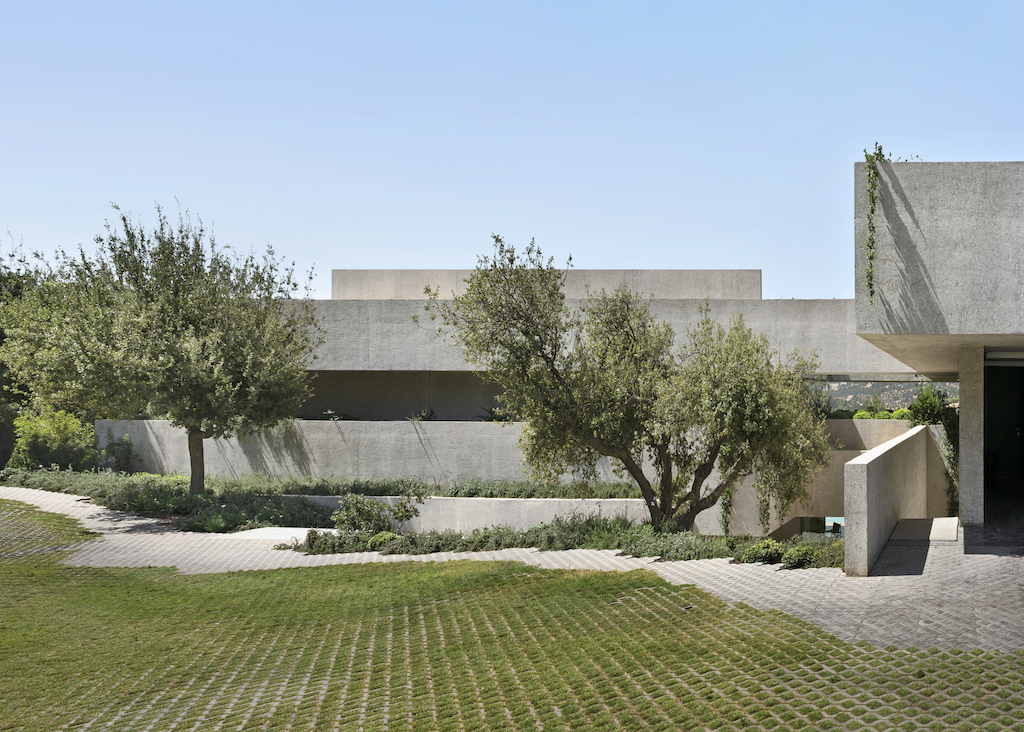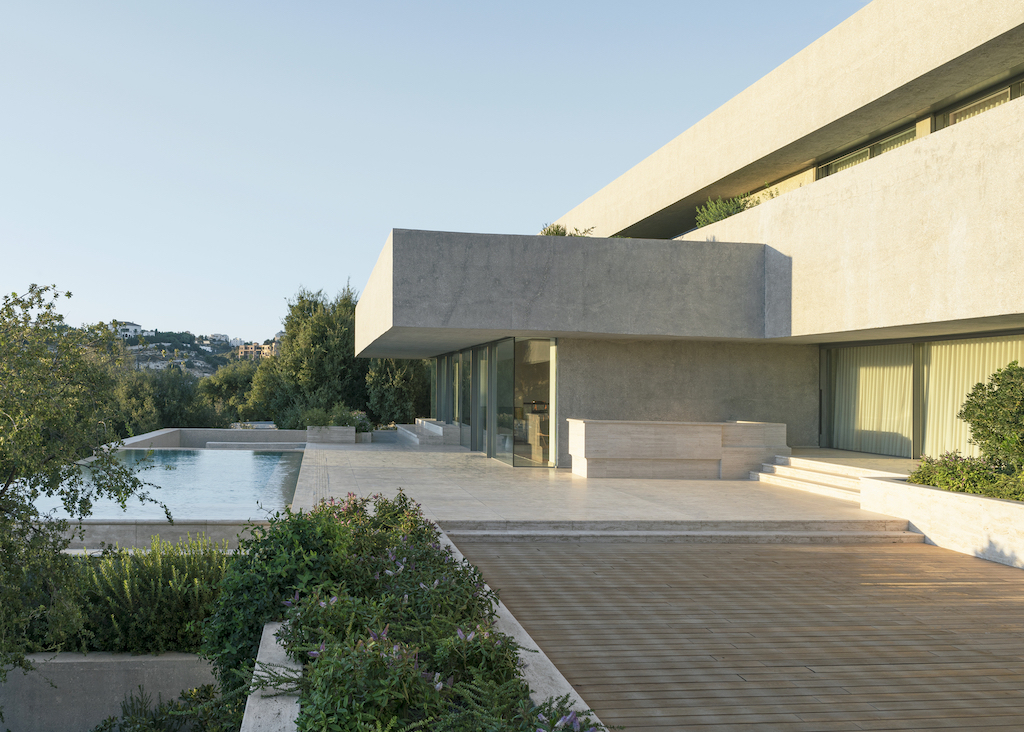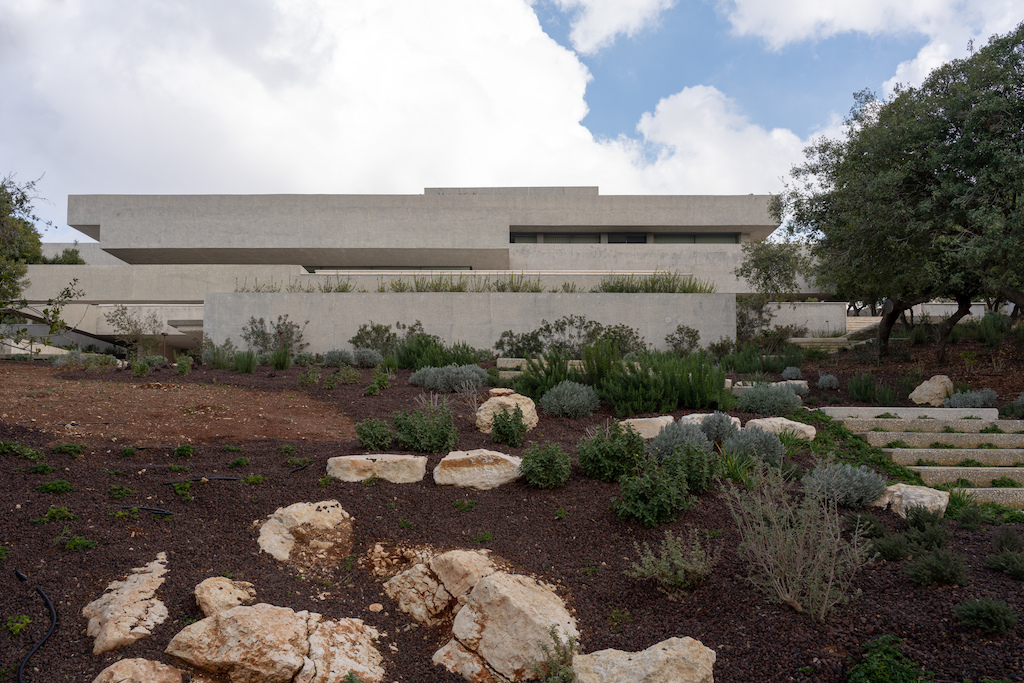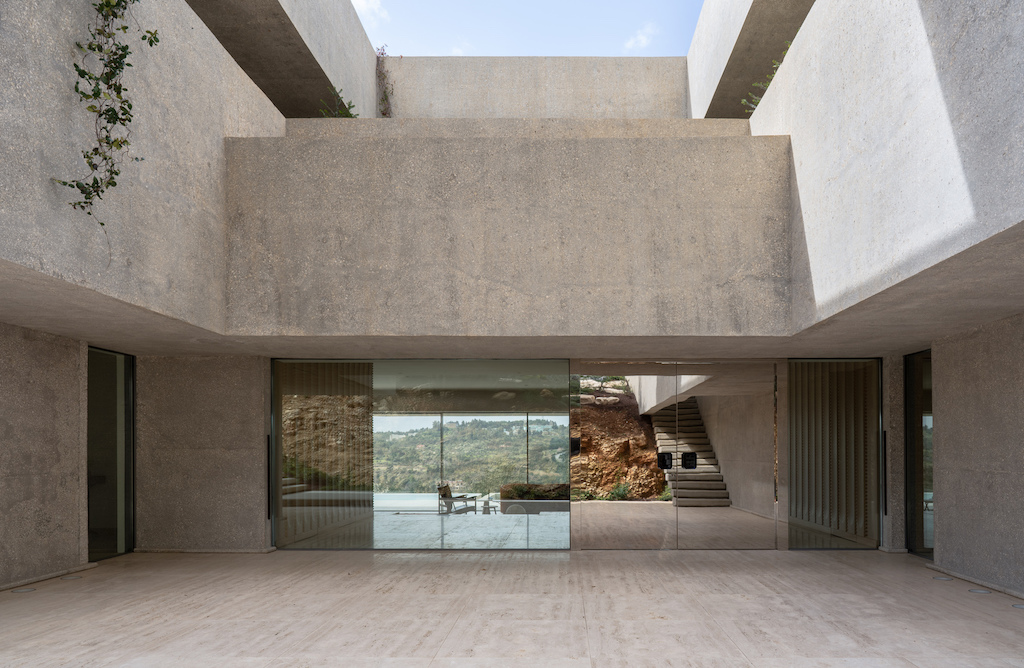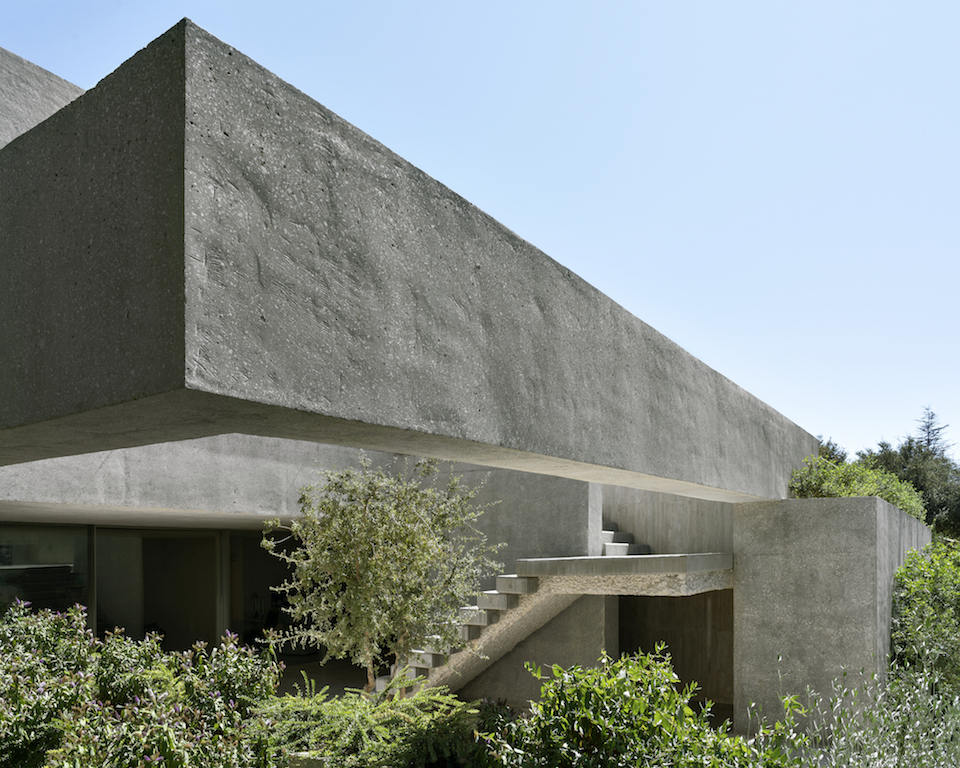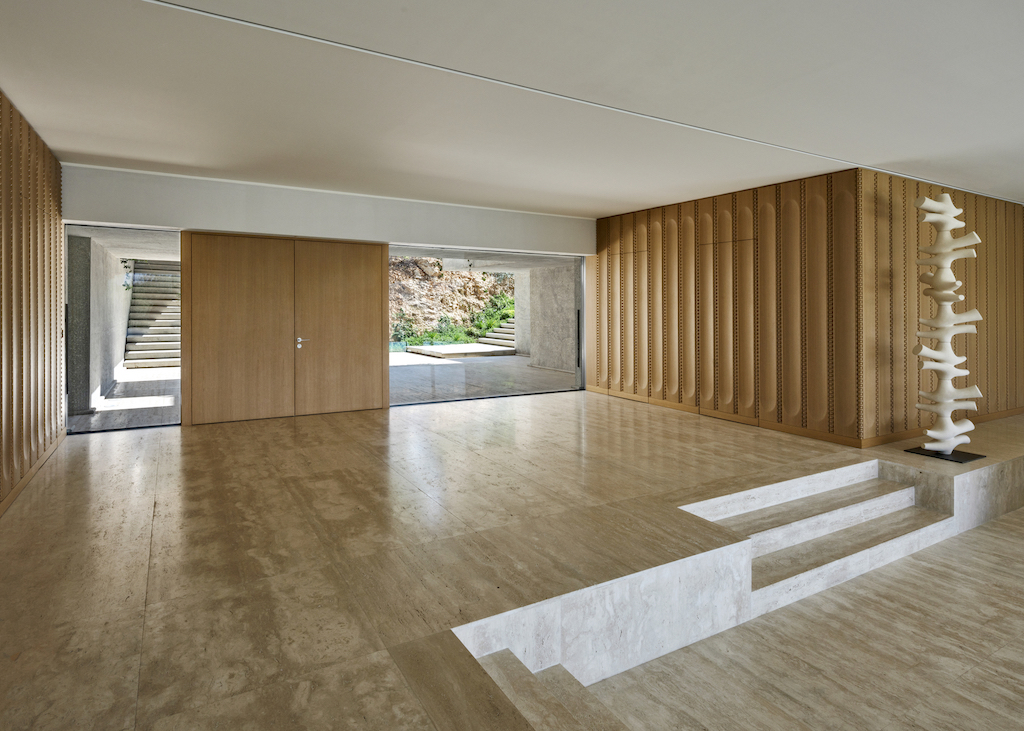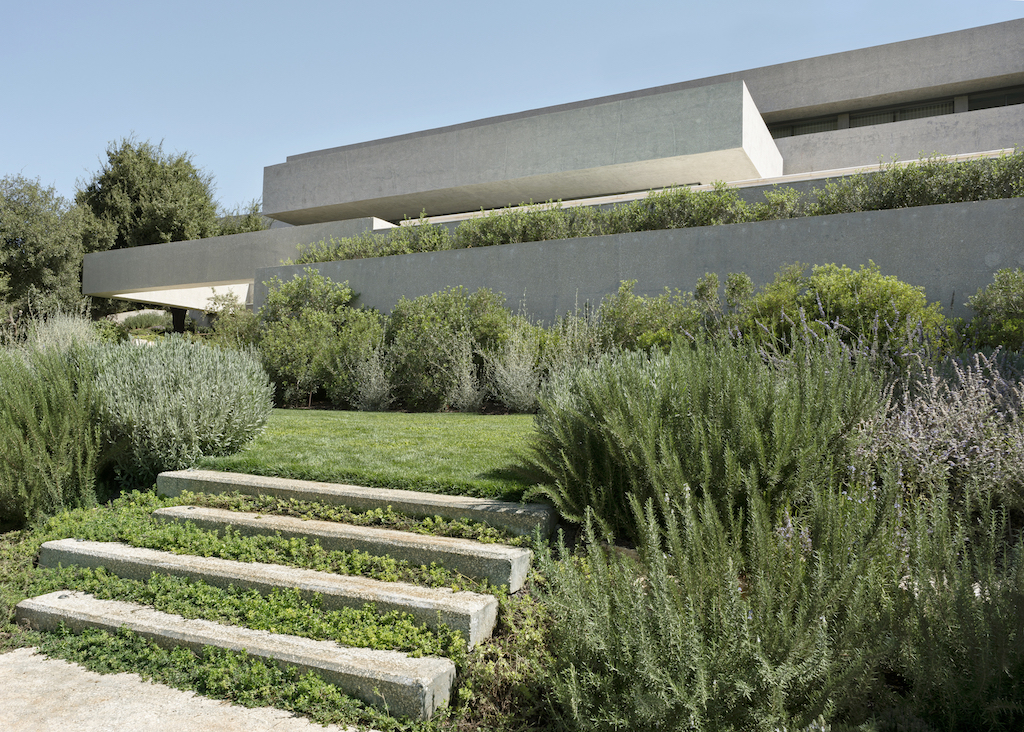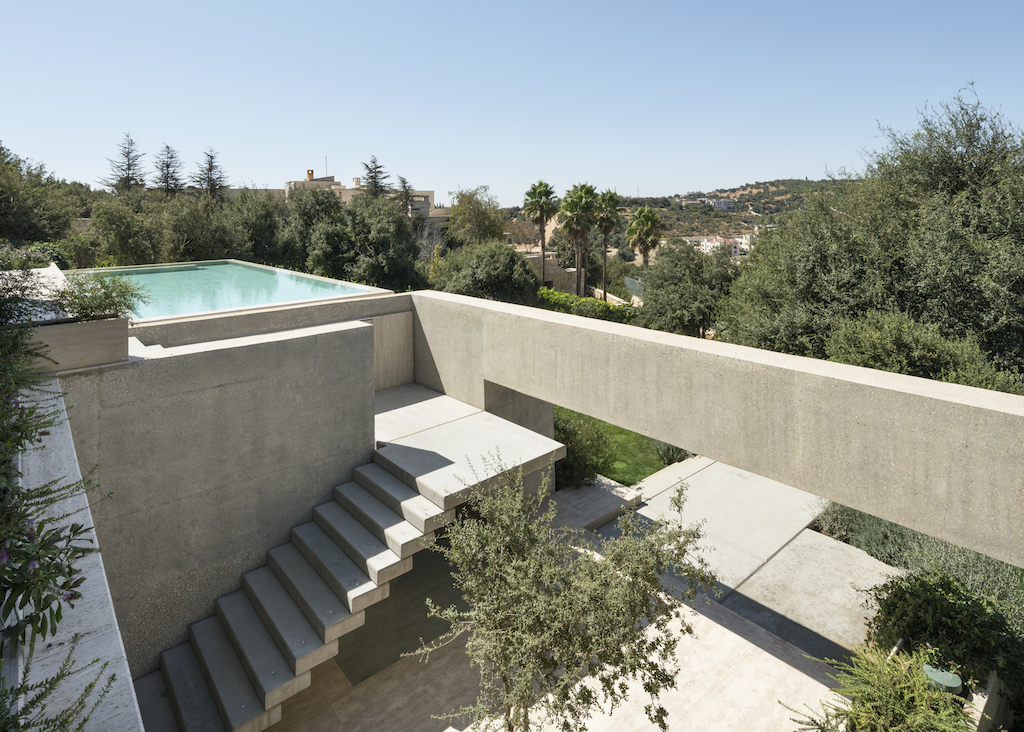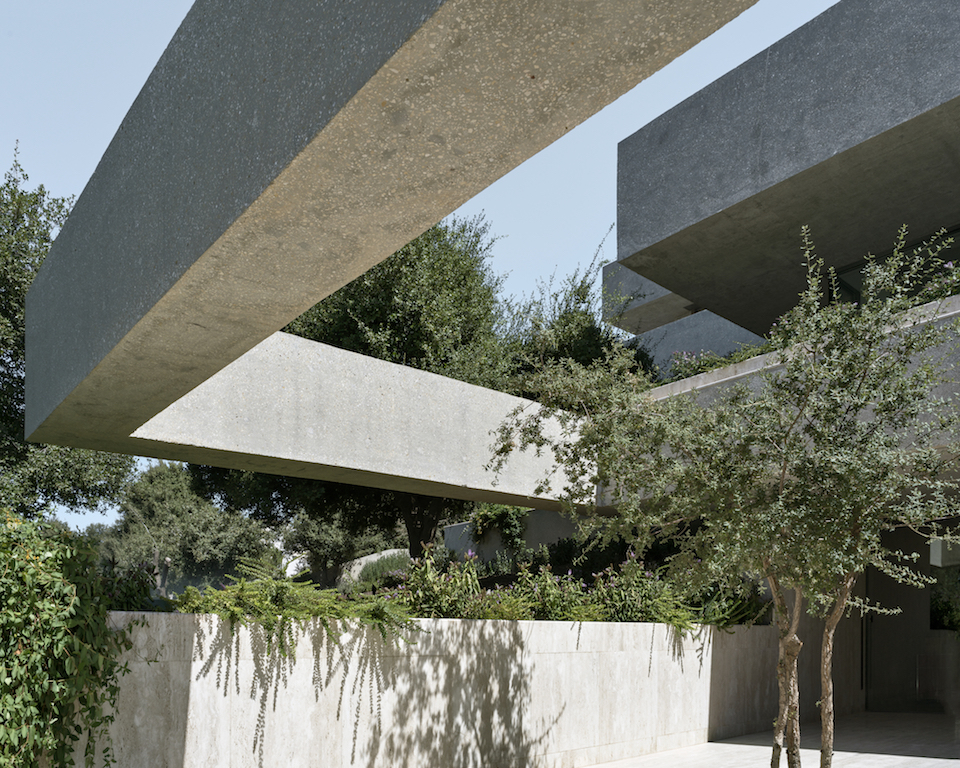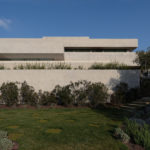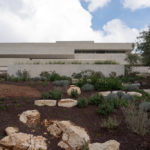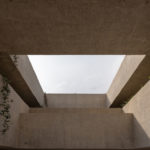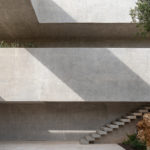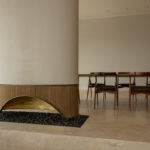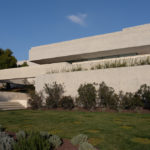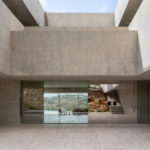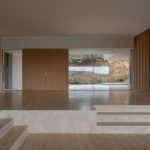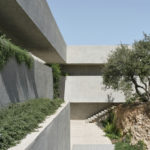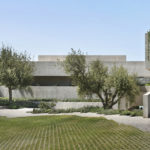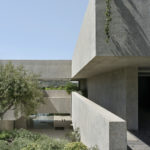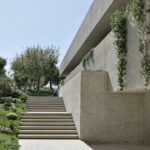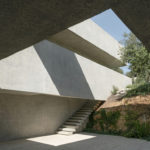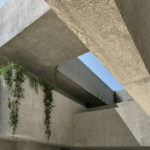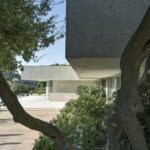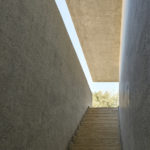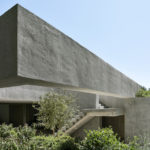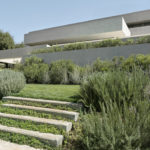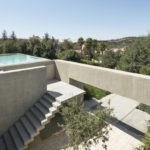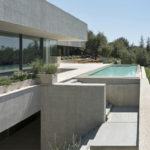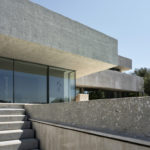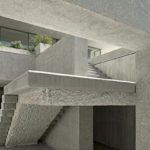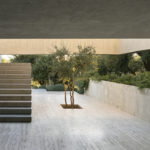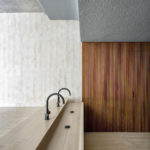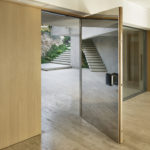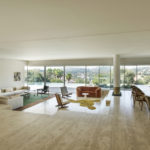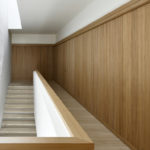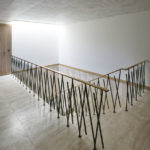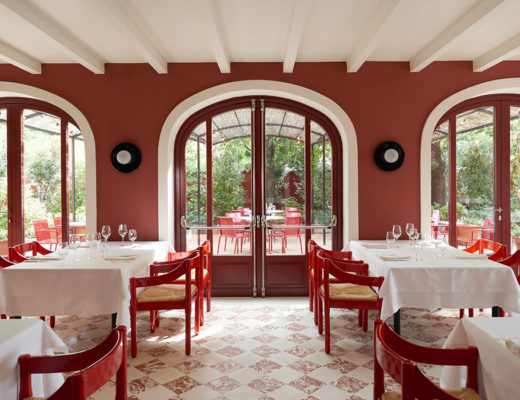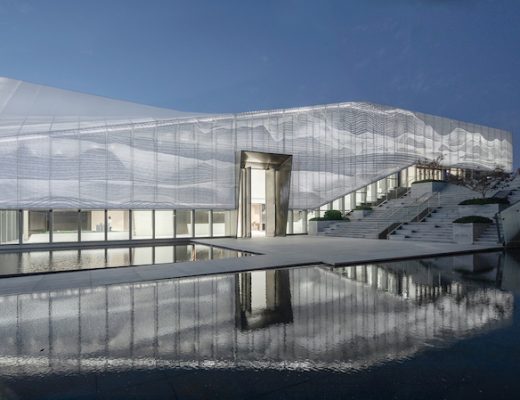Located in Amman’s Dabuq district, the Barghouti House by Sahel AlHiyari Architects responds to its rugged site with a brutalist structure and use of materials that lend a sculptural quality to the house, and in the process tone down the severe appearance. The 1,800m² property is sited in a residential district to the west of Amman with dense vegetation of native oak trees. It’s the only forested area in the Jordanian capital and over the past two decades, it has witnessed rapid urbanisation that has resulted in extensive environmental damage to perhaps the only forested area of Amman.
The site is a rectangular lot of land with a diagonal slope. The footprint is skewed in relation to the land perimeter to align itself with the direction of the slope and to take advantage of most of the open space that has no trees, so as to cause as minimum disruption to the site as possible.
The house consists of two separate parts connected by a roof. The two parts allow and frame a view to the landscape of the hills across the site from the entry point. The separation in mass adheres to one of the client’s requirements, which calls for separating the guest quarters from the rest of the house for privacy.
The house has three floors, yet each level has a direct connection to the land or garden. Such connections result from embedding the first two levels of the house within the land to conform to its topographic levels and to mitigate the effect of the varied scale of the three floors.
The main arrival space is at the highest part of the land and it is defined by the L-shape plan of the upper third level of the house. This part of the house is entirely closed with no fenestrations apart from the garage and main entry of the house, which is a space carved out from the landscape and accessed by stairs. This point of entry opens to the sky through the roof connection and to the landscape across through the interior space. The interiors have been designed in collaboration with well-known Lebanon-based designer duo David/Nicolas while the landscaping is by Lara Zureikat.
The massing of the project consists of a series of thick concrete slabs that run parallel to one another and hover over a deeply recessed space that contains all the window fenestrations, planter beds and circulation paths and stairs. This type of massing heightens the material weight of the project by restricting all the visible elements of the project to a composition of monolithic slabs that interact and stand in contrast to the landscape.
The severity of the architecture is balanced by the hand-sanded surface of the concrete, which produced an array of uneven undulating surfaces that begin to make more sculptural reference to the surrounding landscape and the ground the house sits on.
This controlled imperfection has allowed the project to also be in line with the local construction methods, which still highly depend on low-technology and the work of specialised craftsmen.
See the full gallery here:
Photos: Pino Musi, Sosthen Hennekam
You might also like:
Ivan Priatman Architecture designs a house with concrete geometric panels and glass frames


